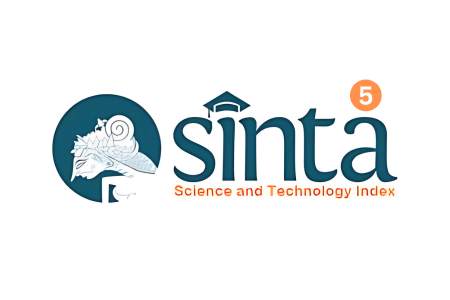Systematic Review on Breast Cancer Classification Using Random Forest and Extreme Learning Machine: Cost Sensitivity and Computational Complexity Perspectives
Keywords:
breast cancer classification, random forest, extreme learning machine, cost sensitivity, computational complexityAbstract
Breast cancer remains one of the most common and deadly cancers affecting women worldwide. Early detection and accurate diagnosis are essential to improve patient survival rates and reduce long-term treatment costs. With the advancement of digital technologies, machine learning (ML) has emerged as a powerful tool in breast cancer classification. Among various ML algorithms, Random Forest (RF) and Extreme Learning Machine (ELM) have gained prominence due to their predictive capabilities. This systematic literature review aims to compare the classification performance of RF and ELM, focusing on cost sensitivity and computational complexity. Using PRISMA guidelines, 60 peer-reviewed articles published between 2013 and 2024 were analyzed. The findings show that RF generally offers high accuracy and robustness against overfitting, making it suitable for complex clinical datasets. Conversely, ELM excels in training speed and computational efficiency, making it ideal for real-time diagnostic systems. However, both methods face challenges in handling imbalanced data, where misclassification of malignant cases can be fatal. Cost-sensitive learning strategies are shown to improve model sensitivity toward minority classes, though their integration into ELM remains limited. Furthermore, computational efficiency is a critical factor, particularly in resource-constrained medical environments. This review provides a thematic synthesis of current research and highlights future directions, such as developing hybrid models combining RF’s accuracy with ELM’s efficiency, and implementing explainable AI for trustworthy clinical adoption.
Downloads
References
Aroef, C., Rivan, Y., & Rustam, Z. (2020). Comparing random forest and support vector machine for breast cancer classification. TELKOMNIKA Telecommunication, Computing, Electronics and Control, 18(3), 1494–1501. https://doi.org/10.12928/telkomnika.v18i3.14658
Chen, J., & Su, X. (2022). Measuring the effectiveness of live selling strategies. Decision Support Systems, 159, 113712. https://doi.org/10.1016/j.dss.2022.113712
Chen, J., & Wu, C. (2022). The role of interactivity in live e-commerce: Implications for customer engagement and purchase intention. Journal of Business Research, 145, 222–234. https://doi.org/10.1016/j.jbusres.2022.03.010
Gupta, D., Khanna, A., & Koundal, D. (2020). Breast cancer prediction using computational intelligence techniques: A comparative study. Computers in Biology and Medicine, 125, 104013. https://doi.org/10.1016/j.compbiomed.2020.104013
Harzing, A. W. (2007). Publish or Perish. https://harzing.com/resources/publish-or-perish
Li, Y., & Guo, L. (2022). The effect of social presence in live-streaming on consumer behavior. International Journal of E-commerce Research, 18(3), 145–160. https://doi.org/10.1007/s10660-021-09442-z
Liang, C., & He, P. (2021). Consumer behavior in e-commerce live streaming: Insights from China. Journal of Retailing and Consumer Services, 59, 102883. https://doi.org/10.1016/j.jretconser.2020.102883
Moher, D., Liberati, A., Tetzlaff, J., & Altman, D. G. (2009). Preferred Reporting Items for Systematic Reviews and Meta-Analyses: The PRISMA Statement. PLoS Medicine, 6(7), e1000097. https://doi.org/10.1371/journal.pmed.1000097
Octaviani, T. L., & Rustam, Z. (2019). Random forest for breast cancer prediction. AIP Conference Proceedings, 2194(1), 020060. https://doi.org/10.1063/1.5139820
Page, M. J., McKenzie, J. E., Bossuyt, P. M., et al. (2021). The PRISMA 2020 statement: An updated guideline for reporting systematic reviews. BMJ, 372, n71. https://doi.org/10.1136/bmj.n71
Quist, J., Taylor, L., Staaf, J., & Grigoriadis, A. (2021). Random forest modelling of high-dimensional microarray data for breast cancer subtype classification. Cancers, 13(5), 991. https://doi.org/10.3390/cancers13050991
Sharma, R., & Sunkaria, R. K. (2022). A cost-sensitive random forest classifier for breast cancer detection using synthetic data augmentation. Expert Systems with Applications, 192, 116381. https://doi.org/10.1016/j.eswa.2021.116381
Zhang, W., & Chen, X. (2020). A hybrid extreme learning machine for breast cancer diagnosis. Applied Soft Computing, 86, 105778. https://doi.org/10.1016/j.asoc.2019.105778
Zhang, Y., Wu, L., & Wang, J. (2021). Breast cancer classification using extreme learning machine with improved kernel function. Knowledge-Based Systems, 221, 106911. https://doi.org/10.1016/j.knosys.2021.106911
Zhou, Y., & Wang, H. (2020). The impact of social presence on purchase intention in live commerce. Journal of Business and Industrial Marketing, 35(8), 1225–1238. https://doi.org/10.1108/JBIM-07-2020-0325
Downloads
Published
How to Cite
Issue
Section
License
Copyright (c) 2025 Journal of Digital Business and Innovation Management

This work is licensed under a Creative Commons Attribution-NonCommercial 4.0 International License.
 Abstract views: 114
,
Abstract views: 114
, PDF Downloads: 117
PDF Downloads: 117






